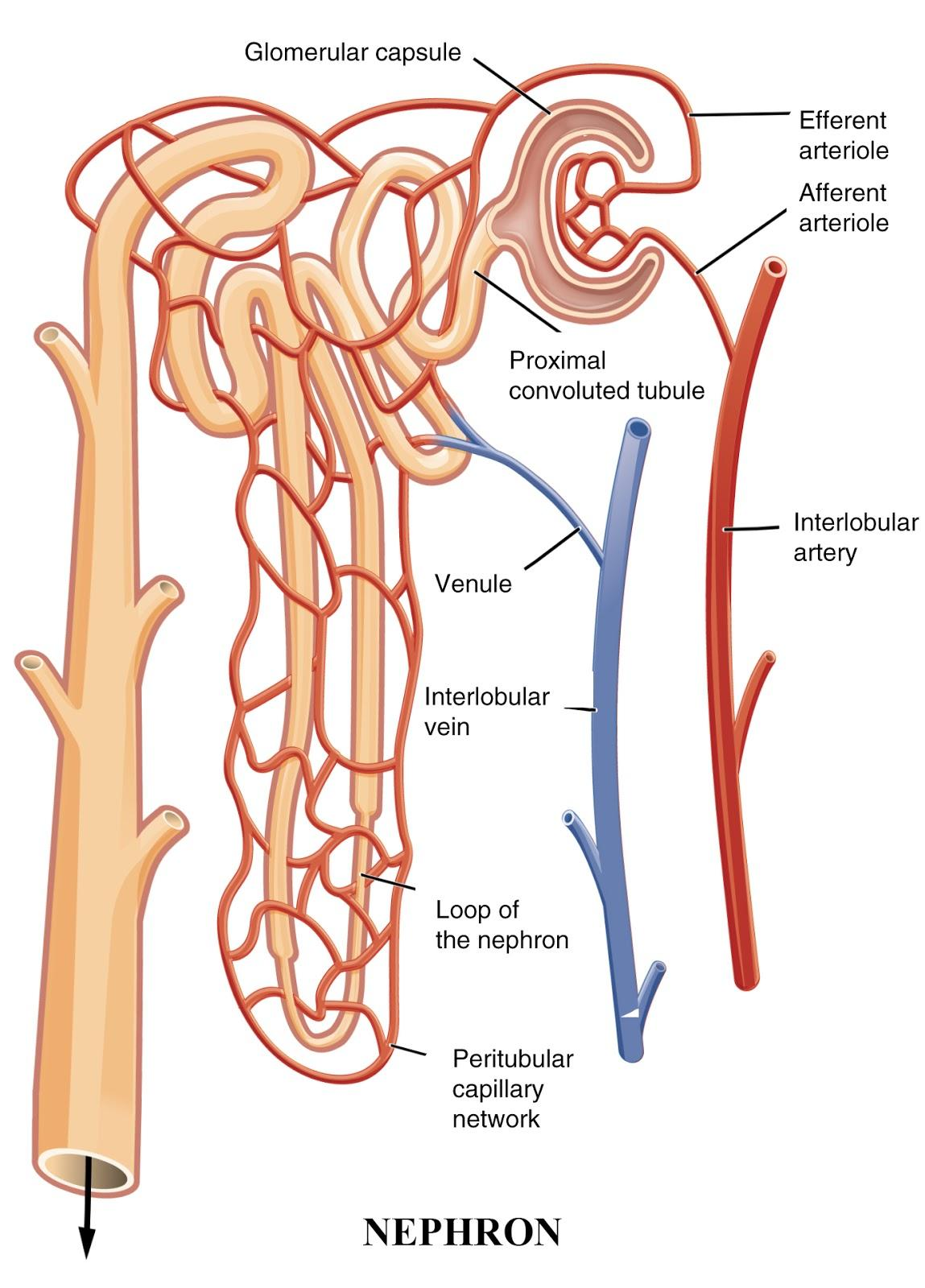
What’s the difference between the efferent arteriole and afferent?
Answer
515.4k+ views
Hint: The blood is carried through renal arteries from the heart to the kidney. They are attached directly to the aorta and help in the blood supply. The blood is then filtered and the wastes are then excreted out through the kidney.
Complete answer:
Difference between the efferent arteriole and afferent
Additional information:
-The diameter of the afferent arteriole is much larger than the diameter of the efferent arteriole as is much thick also helps them in the process of ultrafiltration and in increasing the blood pressure in the glomerulus.
-The blood flow in the efferent arteriole will be more due to the larger diameter of the afferent arteriole resulting in the increase in blood pressure in the glomerulus resulting in the forced movement of the mineral salts, water, and various nitrogenous wastes.
-The glomerulus consists of a tuft-like structure called capillaries that help in the process of ultrafiltration. The capillaries of the glomerulus are surrounded by a bowl-like structure called the Bowman's that help in maintaining the glomerular filtration rate.

Note:
The arterioles are the blood vessel that has a small diameter and then divides further into capillaries that help in the circulation of the blood. It has an outer layer made up of squamous epithelium and smooth muscles. If there is any malfunction in these strictures then it will lead to renal disorder.
Complete answer:
Difference between the efferent arteriole and afferent
| Efferent arteriole | Afferent arteriole |
| It is responsible for carrying away the blood from the glomerulus. | It is responsible for bringing the blood to the glomerulus. |
| It carries the blood which is filtered and carries back for the circulation process. | It carries the blood that consists of nitrogenous wastes in it. |
| It is a part of the renal artery. | It is a part of the renal vein. |
| It carries the pure-blood back for circulation. | It carries the impure blood towards the glomerulus. |
| The diameter of the efferent arteriole is smaller. | The diameter of the afferent arteriole is very large. |
| Its blood pressure is lower due to the filtration of small contents and water. | Its blood pressure is higher that leads to ultrafiltration. |
| It helps in maintaining the glomerular filtration rate. | It helps in maintaining the blood pressure. |
Additional information:
-The diameter of the afferent arteriole is much larger than the diameter of the efferent arteriole as is much thick also helps them in the process of ultrafiltration and in increasing the blood pressure in the glomerulus.
-The blood flow in the efferent arteriole will be more due to the larger diameter of the afferent arteriole resulting in the increase in blood pressure in the glomerulus resulting in the forced movement of the mineral salts, water, and various nitrogenous wastes.
-The glomerulus consists of a tuft-like structure called capillaries that help in the process of ultrafiltration. The capillaries of the glomerulus are surrounded by a bowl-like structure called the Bowman's that help in maintaining the glomerular filtration rate.

Note:
The arterioles are the blood vessel that has a small diameter and then divides further into capillaries that help in the circulation of the blood. It has an outer layer made up of squamous epithelium and smooth muscles. If there is any malfunction in these strictures then it will lead to renal disorder.
Recently Updated Pages
Master Class 11 Social Science: Engaging Questions & Answers for Success

Master Class 11 Physics: Engaging Questions & Answers for Success

Master Class 11 Maths: Engaging Questions & Answers for Success

Master Class 11 Economics: Engaging Questions & Answers for Success

Master Class 11 Computer Science: Engaging Questions & Answers for Success

Master Class 11 Chemistry: Engaging Questions & Answers for Success

Trending doubts
What is meant by exothermic and endothermic reactions class 11 chemistry CBSE

10 examples of friction in our daily life

One Metric ton is equal to kg A 10000 B 1000 C 100 class 11 physics CBSE

Difference Between Prokaryotic Cells and Eukaryotic Cells

1 Quintal is equal to a 110 kg b 10 kg c 100kg d 1000 class 11 physics CBSE

Draw a diagram of nephron and explain its structur class 11 biology CBSE




